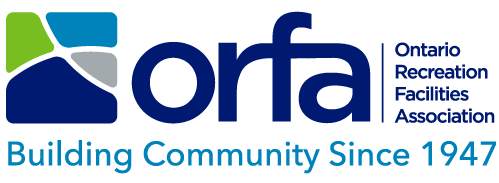- ORFA Home
- The Recreation Facility Profession
- ORFA News and Alerts
- 2017-10 Are Ontario's Ice Rinks Safe?
ORFA News
October 20, 2017
Are Ontario's Ice Rinks Safe?
Given the recent tragic event in Fernie, BC, the question of the state of ice rink refrigeration equipment infrastructure and the potential risks associated with ice rink use in Ontario has been raised.
Although the Ontario Recreation Facilities Inc. (ORFA) is not in a position to validate ice rink owners state of readiness to address emergency situations, the ORFA does continually monitor the pulse of the recreation facilities profession. As a not for profit membership driven organization, the ORFA directly reaches 300 (87%) of Ontario’s 444 municipalities with recreation facilities through membership. There are approximately (currently under review) 750 arenas in Ontario. 70% are single pad facilities with the remaining 30% having multiple pads that equates to 300 ice surfaces (or 1050 total in Ontario). Of these, 90% of the arenas are publicly owned and operated with 10% being a combination of private and educational settings. In addition, there are an estimated 275 curling rinks.
What does the public need to know about their local ice rink. Here are 10 FACTS associated with safe ice arena operations:
- Under the Operating Engineers Regulation all refrigeration plants are “registered” with the Technical Standards and Safety Authority (TSSA). TSSA’s responsibilities includes: ongoing inspection and certification of refrigeration plants and boiler systems to ensure compliance to all Regulations, Codes and Acts. In addition, insurance companies will employ Boiler Inspectors who conduct additional checks for compliance on behalf of the insurance carrier to ensure the potential for claims are reduced.
- Not all ice arena refrigeration plants are required to have provincially certified staff. Refrigeration plants are divided into two categories: “Attended” guarded plants and “Unattended” guarded plants. Both reference “guarded plants”, which refers to the safety controls that are in place to monitor pressures, heat/cold and other mechanical/electrical function of the equipment. Most plants over 200hp then require “certified” staff to regularly monitor the plant. Under 200hp, the plant operator must be deemed “competent” as defined in the Occupational Health and Safety Act. Note: Current regulatory flexibility allows for some arena owners to install equipment that exceeds 200hp and to operate without certified staff.
- Under the Operating Engineers Regulation all registered refrigeration plants must be in a contractual relationship with a recognized refrigeration contractor that must conduct a minimum of one (1) annual maintenance review. Although there should be an expected positive working relationship between the plant owner and refrigeration contractor, the regulatory compliance obligations requires that the owner develop the plants maintenance and upkeep plan and, direct the refrigeration contractor as to what work is to be performed. Well-informed facility staff is key to this relationship working.
- Under the Operating Engineers Regulation the “owner” of a municipal “unattended” refrigeration plant would be the “Mayor and Council” or in a private operation, the “Board of Directors”. It is their responsibility to select and train staff, as well as provide all necessary financial resources to safely operate the equipment to all set regulatory compliance obligations.
- A significant number of Ontario’s ice rinks use ammonia as the primary refrigerant. Freon (R22) is the other substance used within the industry. In most cases, the ammonia is contained within the refrigeration plant room as either a liquid or a gas. There are still a few (aged) ice arenas in Ontario that have ammonia present directly under the ice sheet. If equipment is being properly maintained and serviced and operational staff are adequately trained the risk of a refrigeration plant incident remains low.
- Canada enjoys some of the most aggressive health and safety laws in the world. At times, the amount of regulations and what seems to be difficulty in meeting these requirements are debated. The reality is they are there for human safety - usually based on past incident, accident or death. Regulatory compliance is not an option. Failure to comply will have consequence.
- The Fire Department is not responsible for building evacuation – facility staff and those who oversee programs or facility events are. Too many facility users fail to react when the recreation facility emergency alarms are activated unless they see flames. Recreation facilities house a variety of noxious or toxic gases that cannot be seen. Users must accept the responsibility to safely leave the facility as required under the Fire Code when a building emergency alarm is activated.
- Ontario’s ice arenas are aging and require ongoing, if not increased funding to maintain. Users must understand they too are a stakeholder in public safety. User fees are used to offset the cost of public service. Very few publicly owned ice arenas make a profit. Generated revenues are used to off-set general taxation required to offer recreation opportunities.
- Although there are numerous governing bodies with responsibilities associated with safe facility operations, the key to facility safety rests with well informed professional facility management and staff. These professionals must remain in tune with the shifting regulatory landscape, as well as ensuring that the building is being operated at the highest level possible.
- With FACTS 1-9 being recognized and followed, Ontario’s ice rinks and all recreation facilities are safe places to work and play.
